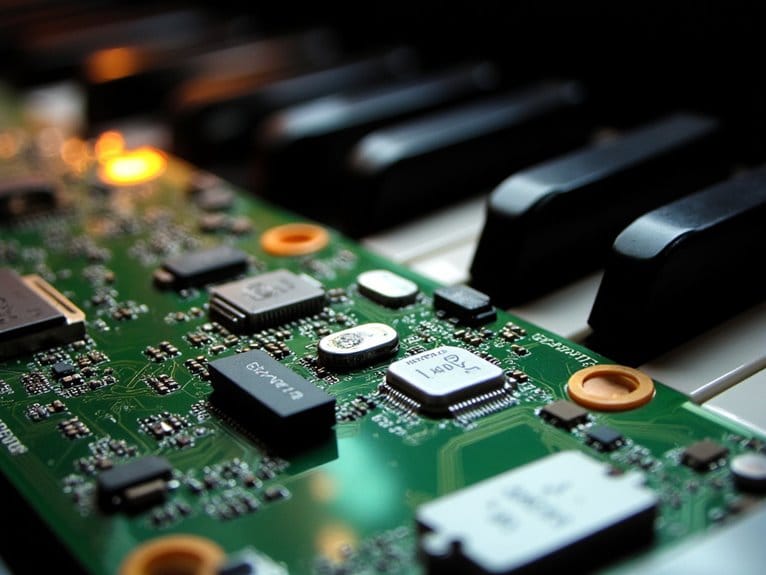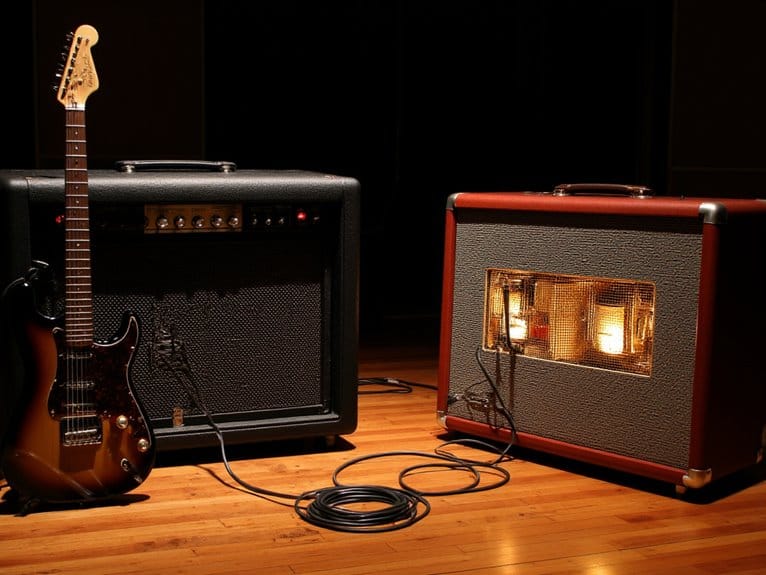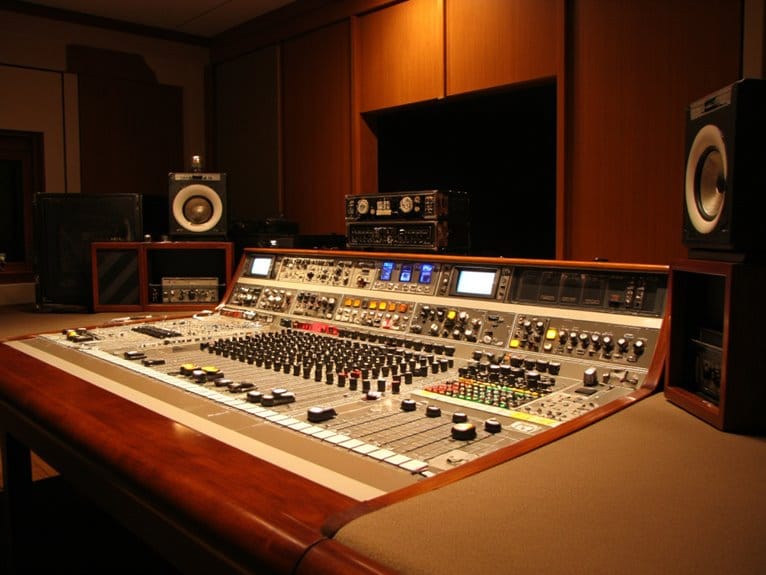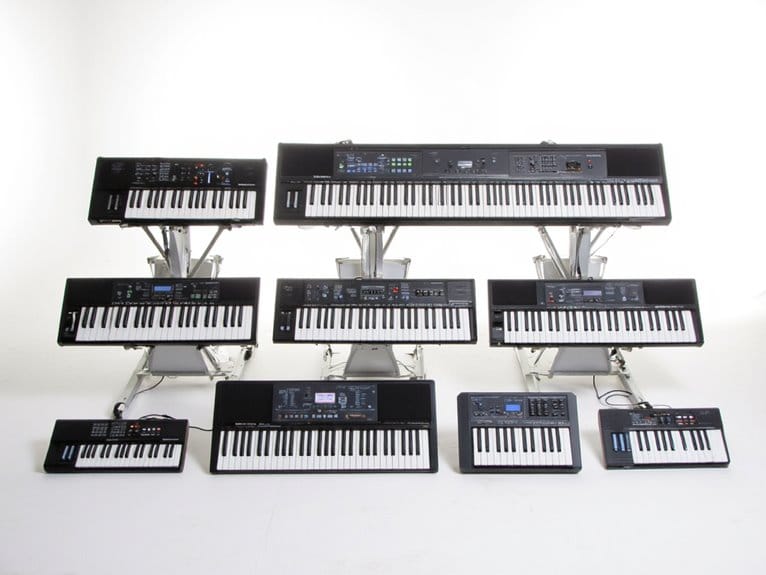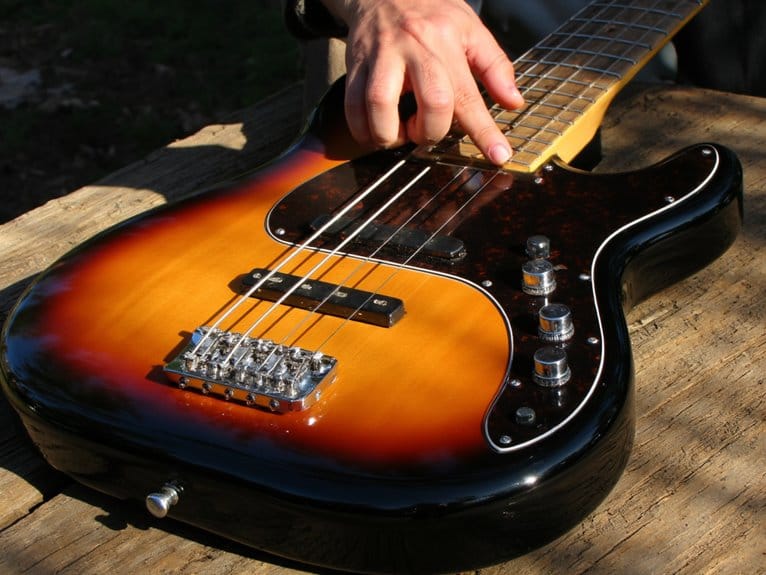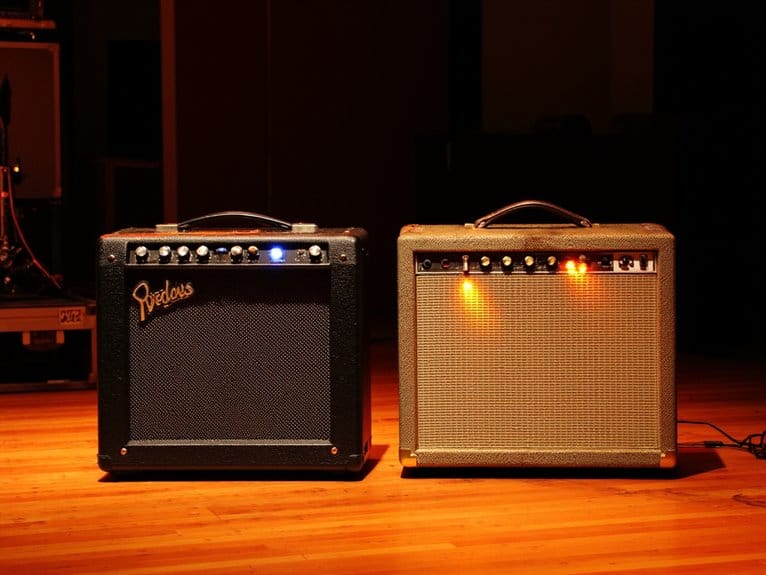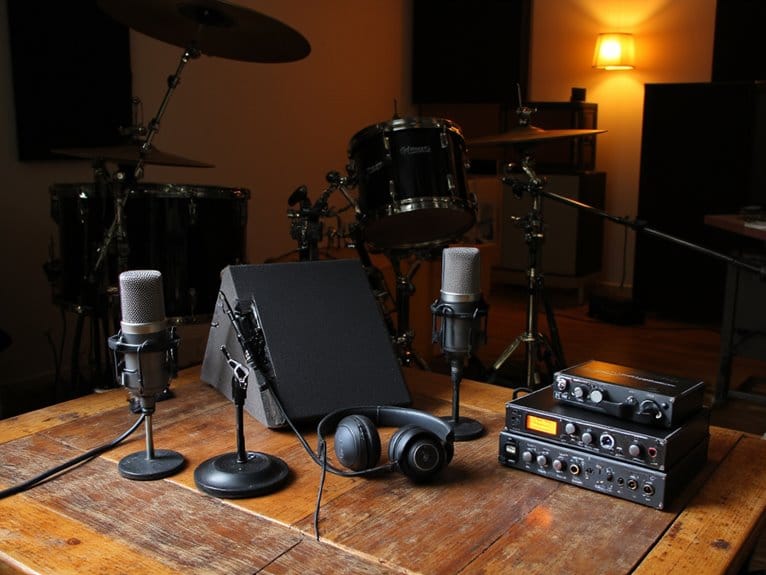Understanding Digital Piano Sound Sampling and Modeling
Digital piano sound technology combines two main approaches: sampling, where you’re hearing actual recorded piano notes captured at multiple velocity layers in professional studios, and physical modeling, which uses algorithms to simulate string vibrations and hammer interactions in real-time. Modern instruments often use hybrid engines that blend both methods, giving you the authenticity of recorded samples with the dynamic responsiveness of mathematical modeling. This combination creates realistic harmonic interactions and sympathetic resonances that respond naturally to your touch, velocity, and timing—though the computational complexity can challenge even advanced processors. Major manufacturers like Roland, Casio, and Kawai each employ proprietary technologies to enhance this foundation, and understanding these differences will help you choose the right instrument for your needs.
We are supported by our audience. When you purchase through links on our site, we may earn an affiliate commission, at no extra cost for you. Learn more.
Notable Insights
- Digital pianos use sampling technology to record individual piano notes at multiple velocity layers, creating realistic sound reproduction.
- Physical modeling generates sounds in real-time using algorithms that simulate actual piano string vibrations and hammer interactions.
- Hybrid sound engines combine sampling and physical modeling to enhance tone quality and provide dynamic sound blending capabilities.
- Leading manufacturers like Roland, Casio, and Kawai each employ unique sound engines with specialized technologies for acoustic realism.
- Professional sampling requires controlled recording environments and careful post-production editing to ensure smooth velocity transitions and optimal sound quality.
The Science Behind Piano Sound Sampling
When I first started exploring how digital pianos create their remarkably authentic sounds, I discovered that sampling technology forms the foundation of this impressive feat.
The process involves recording each piano note individually in controlled environments like anechoic chambers, capturing every sonic detail from hammer noise to string resonance.
What impressed me most was learning that manufacturers record multiple velocity layers—sometimes 20+ per key—to reflect different strike intensities and dynamics.
However, sampling limitations become apparent when memory constraints force compromises in sample length and complexity. Engineers must carefully balance quality with storage capacity, occasionally introducing digital noise during processing.
Advanced multi-channel recording techniques capture spatial details from various microphone positions, though these extensive sample banks require substantial processing power to deliver seamless playback across the keyboard’s full range. Professional studios typically employ a stereo configuration of microphones to achieve optimal sound capture during the initial recording phase. This sophisticated approach represents the culmination of 40 years of technological advancement in digital piano development.
Physical Modeling Technology Explained
Unlike sampling’s approach of playing back recorded audio files, physical modeling technology generates piano sounds in real-time by mathematically simulating the actual mechanical processes that occur when you press a key.
When you strike a key on a physically modeled digital piano, sophisticated algorithms calculate how the hammer hits the string, how that string vibrates at specific frequencies, and how those vibrations interact with the instrument’s resonant body to create the final sound you hear.
This computational approach means every note you play is fundamentally “performed” by a virtual piano that responds dynamically to your touch, velocity, and timing just like an acoustic instrument would. Hundreds of elements interact during this process to produce a “perfectly imperfect” sound that captures the natural complexity of acoustic piano performance.
Real-Time Sound Generation
While sampling technology captures the essence of acoustic pianos through recorded audio, physical modeling takes a fundamentally different approach by mathematically recreating the actual physics of sound production in real-time.
When you press a key on a physically modeled digital piano, the instrument’s processor instantly calculates how your touch velocity, timing, and pressure would affect a real piano’s hammer strike, string vibration, and soundboard resonance. This creates incredibly responsive sound dynamics that adapt to your playing style, unlike static samples that simply play back recorded audio.
The system simulates acoustic interactions between strings, including sympathetic resonances and harmonic overtones that naturally occur when multiple keys are pressed simultaneously, producing the nuanced musical relationships you’d experience on an acoustic instrument.
String Vibration Simulation
At the heart of physical modeling lies string vibration simulation, a sophisticated process that I’ve found transforms how digital pianos respond to your touch by mathematically recreating the complex physics of actual piano strings.
These algorithms capture string dynamics through second-order differential equations, modeling how each string moves perpendicular to its length while accounting for frequency loss and wave dispersion effects that shape tonal quality.
What’s particularly impressive is how hammer interaction defines initial conditions, determining strike force and position to influence sound evolution.
Advanced techniques like Virtual Resonance Modeling simulate resonance behavior between undamped strings, creating sympathetic vibrations that add remarkable depth.
This simulation accuracy produces thousands of dynamic levels compared to sampling’s limited range, though I’ll admit the computational complexity still challenges even modern processors.
Hybrid Sound Engines: Combining the Best of Both Worlds
When manufacturers first started combining sampling and physical modeling technologies, I’ll admit I was skeptical about whether these hybrid sound engines could truly deliver the “best of both worlds” they promised. However, after extensive testing, you’ll find that modern hybrid functionality genuinely expands your tonal possibilities by merging high-fidelity acoustic recordings with mathematical algorithms that simulate string resonance and soundboard acoustics.
| Feature | Sampling Contribution | Physical Modeling Contribution |
|---|---|---|
| Tone Quality | Authentic recorded character | Dynamic string interaction |
| Performance | Consistent playback | Real-time sound blending |
| Versatility | Multiple piano samples | Infinite tonal variations |
The real magic happens during sound blending, where you can seamlessly shift between sampled authenticity and modeled responsiveness, creating dynamic ranges that neither technology achieves independently while maintaining the expressive control serious pianists demand.
From Studio to Software: The Sample Recording Process
When you’re capturing piano samples for digital reproduction, I’ve found that anechoic chamber recording methods represent the gold standard, eliminating unwanted reflections and reverberations that can muddy your final product through specialized foam-lined environments where even technicians suspend themselves on rope nets to maintain acoustic integrity.
The meticulous process involves positioning multiple microphones at precise angles and distances from the piano’s soundboard, strings, and hammers to capture both the direct tonal characteristics and subtle mechanical nuances that give each note its authentic character.
After recording, post-production sample editing becomes essential for removing inconsistencies, creating velocity layers that respond to playing dynamics, and applying looping techniques that guarantee seamless note sustain and release phases in your digital piano software.
Professional manufacturers like Kawai implement 88-note stereo sampling through their Harmonic Imaging Sound Engine to capture these acoustic nuances across the entire keyboard range, ensuring each key maintains its unique tonal characteristics and dynamic response.
Anechoic Chamber Recording Methods
Breaking down the science behind digital piano sampling reveals that anechoic chambers serve as the foundation for capturing the purest possible recordings, eliminating every trace of room coloration that could compromise sample accuracy. These specialized rooms, lined with foam wedges, absorb all sound reflections while suspended floors prevent contamination from technician movement.
Musicians perform while listening to reference tracks through open-back headphones, maintaining timing despite the unnaturally dry acoustic environment. Microphone placement becomes critical, often utilizing multi-mic setups like the Decca tree formation to capture complete tonal ranges at 24-bit/96kHz resolution.
| Recording Aspect | Implementation Method |
|---|---|
| Sound Isolation | Foam wedges absorb all reflections |
| Floor Design | Suspended rope nets over foam |
| Performer Monitoring | Open-back headphones with reference tracks |
| Microphone Setup | Multi-mic arrays for stereo imaging |
| Recording Quality | 24-bit/96kHz high-resolution capture |
However, sampling techniques require patience—the absence of natural reverberation makes forceful playing sound harsh, demanding multiple takes for perfect dynamic capture. Professional studios often utilize the same 24-bit/192kHz recording quality standards found in modern affordable audio interfaces to ensure maximum sample fidelity throughout the production chain.
Post-Production Sample Editing
Once the pristine anechoic recordings reach the digital audio workstation, I’ve found that the real artistry begins in the meticulous post-production phase, where raw piano samples transform from isolated sound fragments into the expressive, dynamic instruments we experience in modern digital pianos.
The editing process involves several critical steps that guarantee sample consistency across your keyboard’s entire range:
- Velocity layer alignment – Multiple recordings per note are calibrated for smooth shifts between soft and hard strikes, preventing jarring volume jumps that’d make your playing sound mechanical.
- Noise reduction processing – Background electrical hum and ambient interference get filtered out while preserving the piano’s natural acoustic character.
- Sustain and loop optimization – Seamless loops allow indefinite note sustain without audible artifacts, while decay portions maintain realistic fading.
This careful balance transforms studio recordings into responsive, musical instruments.
Leading Manufacturers and Their Proprietary Technologies
As digital piano technology has matured over the past decade, I’ve witnessed major manufacturers develop increasingly sophisticated proprietary sound engines that push the boundaries of acoustic realism through distinct approaches to sampling and modeling. Roland’s SuperNATURAL Piano Modeling and EARTH Platform combine detailed multi-sampling with real-time modeling, offering seven distinctive piano types with spatial room acoustics. Casio’s AiR Grand Sound Source employs Multi-dimensional Morphing technology, modeling three legendary acoustic grands with smooth tonal shifts. Kawai prioritizes full 88-key Harmonic Imaging XL sampling paired with premium audio partnerships, delivering concert-grade authenticity through powerful 40W output systems.
| Manufacturer | Key Technology | Unique Feature |
|---|---|---|
| Roland | SuperNATURAL Modeling | Spatial room acoustic simulation |
| Casio | AiR Grand Sound Source | Multi-dimensional Morphing shifts |
| Kawai | Harmonic Imaging XL | Full 88-key sampling depth |
These manufacturer comparisons reveal how technology advancements continue reshaping digital piano capabilities.
Frequently Asked Questions
Which Sound Technology Is Better for Beginners: Sampling or Modeling?
You’ll find digital sampling better as a beginner since it provides immediate acoustic realism and authentic piano tone. Sound modeling offers more flexibility, but sampling’s natural sound quality helps you develop proper musical ear training.
On a final note
You’ve now got the technical foundation to make an informed decision about digital piano sound technology. Whether you’re drawn to the authentic detail of high-quality sampling, the expressive potential of physical modeling, or the balanced approach of hybrid engines, understanding these technologies helps you choose an instrument that matches your musical goals and budget, ultimately enhancing your playing experience for years to come.

